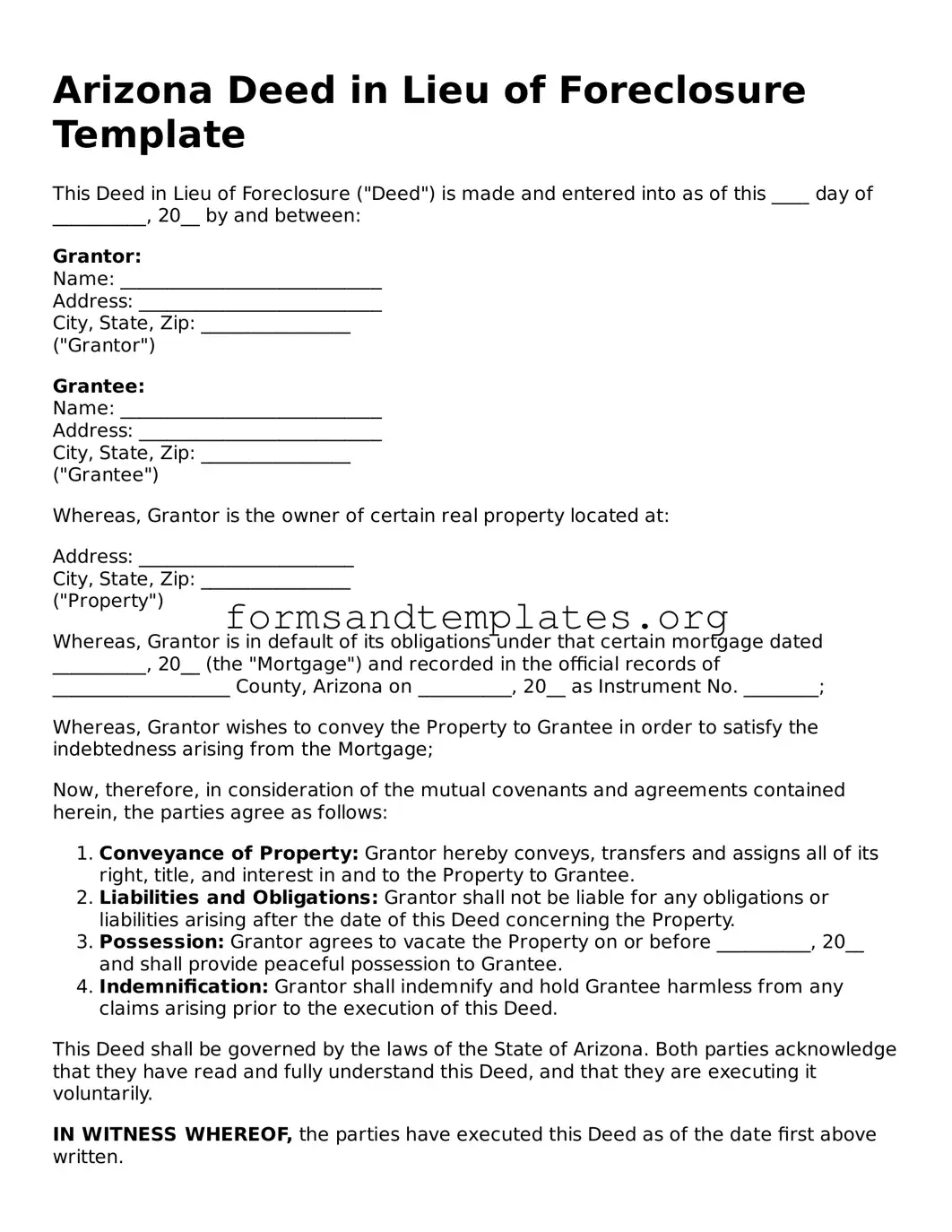Arizona Deed in Lieu of Foreclosure Template
This Deed in Lieu of Foreclosure ("Deed") is made and entered into as of this ____ day of __________, 20__ by and between:
Grantor:
Name: ____________________________
Address: __________________________
City, State, Zip: ________________
("Grantor")
Grantee:
Name: ____________________________
Address: __________________________
City, State, Zip: ________________
("Grantee")
Whereas, Grantor is the owner of certain real property located at:
Address: _______________________
City, State, Zip: ________________
("Property")
Whereas, Grantor is in default of its obligations under that certain mortgage dated __________, 20__ (the "Mortgage") and recorded in the official records of ___________________ County, Arizona on __________, 20__ as Instrument No. ________;
Whereas, Grantor wishes to convey the Property to Grantee in order to satisfy the indebtedness arising from the Mortgage;
Now, therefore, in consideration of the mutual covenants and agreements contained herein, the parties agree as follows:
- Conveyance of Property: Grantor hereby conveys, transfers and assigns all of its right, title, and interest in and to the Property to Grantee.
- Liabilities and Obligations: Grantor shall not be liable for any obligations or liabilities arising after the date of this Deed concerning the Property.
- Possession: Grantor agrees to vacate the Property on or before __________, 20__ and shall provide peaceful possession to Grantee.
- Indemnification: Grantor shall indemnify and hold Grantee harmless from any claims arising prior to the execution of this Deed.
This Deed shall be governed by the laws of the State of Arizona. Both parties acknowledge that they have read and fully understand this Deed, and that they are executing it voluntarily.
IN WITNESS WHEREOF, the parties have executed this Deed as of the date first above written.
Grantor:
______________________________
Signature
Date:
______________________________
Grantee:
______________________________
Signature
Date:
______________________________
